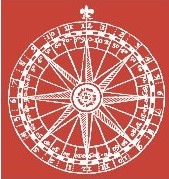«Vrayment voicy de plaisans fous»: la folie dans le théâtre profane de Marguerite de Navarre
This study shows that the dialectics of wisdom and folly, which owes a great deal to the relativization of reason in Renaissance culture, undergoes an original development in Marguerite de Navarre’s “secular” theater. While in these plays Marguerite…
Listed in Article | publication by group Iter Community
Version 1.0 - published on 17 Oct 2025
Licensed under Creative Commons BY-NC 4.0
Description
This study shows that the dialectics of wisdom and folly, which owes a great deal to the relativization of reason in Renaissance culture, undergoes an original development in Marguerite de Navarre’s “secular” theater. While in these plays Marguerite uses figures of folly which inscribe themselves in the tradition represented by the late-medieval wordly fool, or Erasmus’s wise fool, she also creates the figure of the spiritual fool, who draws from both divine science and mystical ecstasy. The protagonists of four of Marguerite’s plays, Le Mallade, L’Inquisiteur, Trop, Prou, Peu, Moins, and the Comédie jouée au Mont de Marsan (written between 1535 and 1547), embody spiritual folly to an increasingly sublime degree, from the docta ignorantia up to mystic rapture. This exceeds, however, not only Erasmus’s conception but also that of the spiritual influences on the queen (Guillaume Briçonnet, Marguerite Porete) and appears to be her own invention, by means of which she expresses the most radical spiritual aspirations of a soul in search of God.
Cite this work
Researchers should cite this work as follows:
Tags
Notes
Original publication: Marczuk, Barbara. "«Vrayment voicy de plaisans fous»: la folie dans le théâtre profane de Marguerite de Navarre." Renaissance and Reformation 38 (4): 2020. 33-49. DOI: 10.33137/rr.v38i4.8837. This material has been re-published in an unmodified form on the Canadian HSS Commons with the permission of Iter Canada / Renaissance and Reformation. Copyright © the author(s). Their work is distributed by Renaissance and Reformation under a Creative Commons Attribution-NonCommercial 4.0 International License. For details, see https://creativecommons.org/licenses/.
Publication preview
Iter Community
This publication belongs to the Iter Community group.
When watching a publication, you will be notified when a new version is released.
